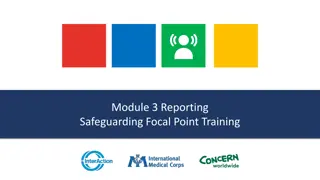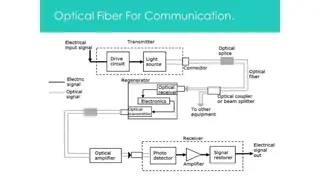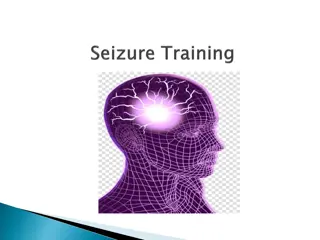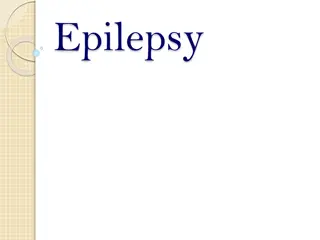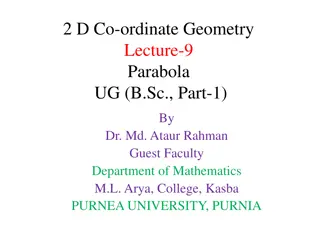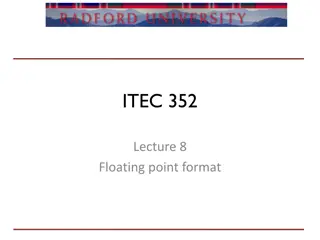Multiple Point Lightning Protection Accessories, Multiple Point, Electrolytic Co
We are a leading manufacturer, exporter and supplier of a wide range of Multiple Point Lightning Protection Accessories, Multiple Point, Electrolytic Copper Multiple Point, Earthing and Lightning Protection at very cheap prices for our clients from Mumbai, India.
2 views • 3 slides
Safeguarding Focal Point Training: Empowering SFPs to Ensure Safety and Prevention
This training program focuses on enhancing the skills of Safeguarding Focal Points (SFPs) to effectively disseminate information, develop safeguarding messages, support assessments, and collaborate with other SFPs for collective protection measures. The sessions cover important topics such as raisin
5 views • 18 slides
Overview of DSW End Point Assessment Team Leader Level 3
DSW End Point Assessment Team Leader Level 3 provides a clear understanding of the assessment process, ensuring individuals comprehend why and when it occurs, responsibilities involved, and how DSW supports them. It covers topics such as what End Point Assessment entails, assessment design and deliv
2 views • 18 slides
Enhancing Connectivity - Point-to-Point Wireless Installation in New Jersey
Point-to-Point wireless installation involves establishing a direct wireless link between two fixed points, typically using directional antennas. This setup bypasses the need for physical cables, making it ideal for connecting remote locations, exten
2 views • 2 slides
SEASCAPE TECHNICAL WORKING GROUP SESSION 10.1 HIGHLIGHTS
The SEASCAPE TECHNICAL WORKING GROUP SESSION 10.1, chaired by Dr. Norasma Dacho, discussed focal points, work plan updates for 2019 and proposals for 2020, SOM-14 updates, and agreement on SOM-15 recommendations. Member countries presented their focal points, and the status of the 2019 workplan was
0 views • 9 slides
Floating Point Representation of Numbers
Floating point representation is crucial in computer arithmetic operations. It involves expressing real numbers as a mantissa and an exponent to preserve significant digits and increase the range of values stored. This normalized floating point mode allows for efficient storage and manipulation of r
0 views • 12 slides
Realistic Particle Representations and Interactions in Emission & Regeneration UFT
The presentation explores a model in which particles are depicted as focal points in space, proposed by Osvaldo Domann. It delves into theoretical particle representations, motivation for a new approach, and the methodology behind the Postulated model. Additionally, it delves into particle represent
2 views • 24 slides
Trigonometry and Compass Directions Problem Solving
In this trigonometry problem, a ship travels from point A to point B and then to point C in specific directions. By applying the Pythagorean theorem, the distance from point C to A is calculated to be 7.2 km. The angle BCA is determined to be 34 degrees, and the direction of point C from A is found
0 views • 5 slides
International Health Regulations (IHR): Reporting and Communication Mechanisms for Health Emergencies
This comprehensive overview explores the roles of National IHR Focal Points, responsible authorities for reporting under IHR, operational frameworks, communication channels, notification processes, and engagement with WHO in managing health emergencies. It also delves into the assessment criteria fo
0 views • 13 slides
Points of Inflection in Calculus
Points of inflection in calculus refer to points where the curve changes from convex to concave or vice versa. These points are identified by observing changes in the curve's concavity, and they are not always stationary points. A stationary point can be a point of inflection, but not all points of
0 views • 14 slides
Project Contributions to GEF Focal Areas Outcomes and Outputs
Highlighting the project's contributions to various GEF focal areas outcomes and outputs, including biodiversity, climate change adaptation, mitigation, and more. The presentation covers strategic issues encountered, lessons learned from implementing a programmatic approach, and insights on upscalin
0 views • 7 slides
Safeguarding Focal Point Training: Enhancing Reporting and Response Mechanisms
This training module focuses on equipping Safeguarding Focal Points (SFPs) with the knowledge and skills to enhance community-based feedback mechanisms, efficiently handle safeguarding complaints, and address barriers to reporting. Participants will also learn about data protection guidelines, inclu
0 views • 18 slides
Overview of Point-to-Point Fiber Optic Communication System
Point-to-point fiber optic communication systems involve converting voice signals from a microphone into digital signals using a coder, transmitting light signals through a semiconductor diode laser over optical fibers, and decoding the signals back to analog for sound production. The system offers
0 views • 11 slides
Safeguarding Focal Point Training Overview
This training module focuses on enhancing the skills of Safeguarding Focal Points (SFPs) to disseminate information among staff, develop relevant safeguarding messages for communities, support safeguarding assessments, and collaborate effectively with other SFPs. It includes sessions on refresher tr
1 views • 18 slides
Safeguarding Focal Point Training Overview
This training aims to equip Safeguarding Focal Points with the knowledge and skills to recognize indicators of safeguarding violations, understand organizational frameworks, and support safeguarding workplans. Sessions cover topics like recognizing harm, safeguarding scenarios, and optional videos o
0 views • 18 slides
Focal Point Responsibilities in Data Management System
Detailed instructions on key responsibilities of a focal point including user creation, configuration backups, data export, maintenance, and configuration import in a data management system. Tasks involve creating and editing users, exporting configurations and data, and maintaining system integrity
0 views • 12 slides
Floating Point Representation in Binary Systems
In computer systems, decimal numbers are represented in memory using scientific notation. This involves moving the decimal point and using mantissa and exponent to maintain precision and range. The transition to representing numbers in binary involves multiplying by 2 to the power instead of 10. Uti
2 views • 22 slides
Introduction to Floating Point Data Types and Operations
This content delves into the fundamentals of floating-point data types, focusing on single-precision floating-point formats like float, excess-127, and their characteristics. It also compares float and int32_t data types, detailing the representation and conversion of values between them. The materi
1 views • 46 slides
Optimal Pathfinding in the Shortest Race
The problem involves finding the optimal point to touch a fence while racing from tree A to tree B to minimize the distance run. By reflecting point A in the fence line to point A' and joining A' to B, the point where AB crosses the fence line gives the solution. This approach is based on the princi
0 views • 25 slides
Sparse Millimeter-Wave Imaging Using Compressed Sensing and Point Spread Function Calibration
A novel indoor millimeter-wave imaging system based on sparsity estimated compressed sensing and calibrated point spread function is introduced. The system utilizes a unique calibration procedure to process the point spread function acquired from measuring a suspended point scatterer. By estimating
2 views • 26 slides
Colligative Properties in Solutions
Colligative properties in solutions depend on the total concentration of solute particles present, impacting properties such as boiling point elevation, freezing point depression, vapor pressure lowering, and osmotic pressure. Boiling point elevation is directly proportional to the number of solute
2 views • 19 slides
Advanced Concepts in Temporal Point Processes for Human-Centered Machine Learning
Explore advanced concepts in temporal point processes through the lens of human-centered machine learning. Topics include marked temporal point processes, independent identically distributed marks, dependent marks, and mutually exciting marks. Learn about stochastic dynamical systems such as the Sus
0 views • 8 slides
Safeguarding Focal Point Training: Enhancing Reporting and Response Mechanisms
This training module focuses on empowering Safeguarding Focal Points (SFPs) to understand and implement community-based feedback and response mechanisms, effectively handle safeguarding complaints, document barriers to reporting, address data protection issues, and ensure inclusive and confidential
0 views • 18 slides
Optics Solved Problems: How to Solve for Focal Lengths
This content provides solutions to various optics problems involving thick lenses, double convex lenses, bi-convex lenses, compound lenses, and more. It covers topics such as identifying principal and focal points, calculating image distances, determining the effective focal length of lens systems,
1 views • 12 slides
Seizure Disorders and First Aid
Seizure disorders can have varying symptoms and may occur at any time in life. Immediate medical treatment is crucial for the first seizure. Factors like stress, illness, temperature changes, and photosensitivity can impact seizure thresholds. Different types of seizures, including focal aware tonic
0 views • 17 slides
Epilepsy: Causes, Symptoms, and Classification
Epilepsy is a medical disorder characterized by recurrent, unprovoked seizures. Seizures are sudden alterations in perception or behavior caused by abnormal neuronal activity. The incidence of epilepsy is high in early childhood, declines, plateaus, and then rises among the elderly. Seizures can be
0 views • 41 slides
Important Terms Related to Parabola in Coordinate Geometry
Learn about key concepts related to the parabola in coordinate geometry including the axis of the parabola, vertex, chord, focal chord, focal distance, latus rectum, and more. This comprehensive guide covers definitions, properties, and equations associated with parabolas, providing a solid foundati
1 views • 9 slides
Freezing Point Depression and Molality for Solutions
Introduction to molality and freezing point depression in solutions. Molality is a way to measure solution concentration, calculated using moles of solute and kilograms of solvent. By calculating the moles of NaCl in a salt solution and the mass of the solvent (ice/water), the molality can be determ
1 views • 9 slides
Comprehensive Overview of Point Contrast Interview Scales
Explore a detailed comparison of various Point Contrast Interview scales ranging from 2-point to 9-point scales. Each scale reflects different levels of favor, action support, uncertainty, and opposition, along with sample responses. The scales provide a structured framework for assessing opinions a
0 views • 8 slides
Nonparametric Tolerance Interval Approach to Immunogenicity Assay Cut Point Determination
This content discusses the importance of determining the cut point for immunogenicity assays to detect anti-drug antibodies (ADA) in large-molecule therapeutics. It highlights the need for well-developed and validated assays to ensure drug efficacy and safety. The approach involves multiple-tiered v
0 views • 26 slides
Gas Processing: Dew Point Control and Refrigeration Systems
Gas processing involves gathering raw gas from wells, passing it through various units like feed gas receiving, condensate stabilization, gas treating, dew point control, and refrigeration units to control liquid condensation and recover natural gas liquids. Dew point control helps prevent condensat
0 views • 26 slides
Colligative Properties in Chemistry
Colligative properties in chemistry depend on the amount and type of solute particles added to a sample, as well as the intermolecular forces at play. They include vapor pressure, boiling point elevation, and freezing point depression. Vapor pressure is the pressure exerted by a vapor on its surroun
0 views • 7 slides
Floating Point Numbers in Computer Science
Exploring the concepts of floating point format, normalization, conversion processes, and IEEE 754 standard for representing floating point numbers in computer systems. Learn about two's complement, excessive notation, and the components that make up a floating point number. Dive into examples of co
0 views • 18 slides
Floating Point Representation in Computer Science
Explore the significance of number representation in computer systems, from integers to real numbers and special cases like NaN. Delve into past incidents where flaws in floating-point representation led to costly errors, emphasizing the importance of precision and accuracy in computing. Learn about
0 views • 42 slides
Floating-Point Numbers in C++: IEEE Standard 754
Floating-point numbers are approximate representations of real numbers used in programming. IEEE Standard 754 defines how floating-point data is stored, including single and double precision formats. Learn about the sign, mantissa, exponent, biases, precision, overflow, and underflow in floating-poi
0 views • 25 slides
Floating-Point Arithmetic in Computer Organization
Exploring floating-point numbers and their representation in the IEEE 754 standard, including addition, subtraction, multiplication, and rounding. Learn about the significance of extra bits, the importance of normalization, and the impact of precision on floating-point values. Delve into MIPS floati
0 views • 74 slides
Dose Efficiency in Computed Tomography Imaging
The physicist conducted testing on a computed tomography scanner to analyze the tube output and dose efficiency at various mAs settings. The shift in dose efficiency between 500 and 600 mAs is due to the use of different focal spots and collimator adjustments. When the collimator accommodates the la
0 views • 6 slides
Point-to-Point Protocol (PPP) and Serial Communications in WANs
This content explores the Point-to-Point Protocol (PPP), outlining its components, establishment of sessions, authentication protocols, and configuration. It also delves into WAN connection options, serial and parallel ports communication, and serial communication standards for LAN-to-WAN connection
0 views • 31 slides
Important Terms and Properties of Hyperbola in Co-ordinate Geometry
The lecture covers essential terms related to hyperbola, including center, axes, vertices, latus-rectum, and focal property. It explains the focal property and its proof, defining hyperbola as the locus of a point with constant distances from fixed points.
0 views • 7 slides
A Formulation for Unknown Focal Length
A detailed exploration of solving for unknown focal length in camera pose estimation problems, addressing redundancies, introducing a new parameterization method, and discussing novel applications. The formulation allows for more efficient and accurate solutions in scenarios with varying complexitie
0 views • 7 slides











